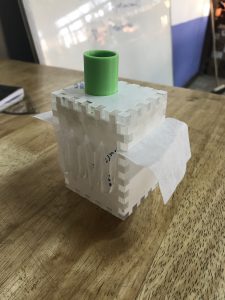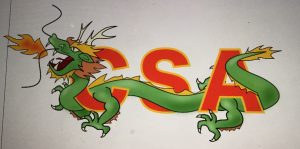What does a Swiss Army knife, Cholula Hot Sauce, and a portable phone charger have in common? First and foremost these are all things I am thankful to have brought with me on this trip. More relevant, these items all started out as concepts or ideas waiting to be realized. As an engineer, when testing solutions and building a prototype, a lot of the time is spent on optimization or improving on existing ideas. However, an arguably more critical step is brainstorming. A good idea determines whether a product or solution even has a chance to be implemented and will literally make or break a project. But even though it’s so important, this is probably the least structured step of the engineering design process and the hardest to define. So with that in mind, where does an good idea come from?
I am certainly not qualified to answer a question like that but I will say to me the best way to generate ideas that have merit is a combination of identifying needs and unstructured personal time. The former is pretty straightforward, but the latter are where some of the craziest ideas are generated. At the design studio in order to facilitate innovation and boost productivity we are given time to find and work on our own personal projects; this time is called 20% time. Pioneered by Google , this freedom is responsible for gmail and Adsense among others. It is supposed to be 20% of the working day but due to time constraints this usually happens on Friday afternoons. Since my main project here is currently entering its final stages I wanted to use this space to talk about some of the other projects I have been working on.

The first and most impressive project I have worked on is creating a reusable internal air filter which can be cleaned and can be used across different concentrator models. With all the experience and knowledge I’ve gained, I decided to apply this to internal air filtering in order to solve another common problem. The prototype consists of HEPA filter paper that is sandwiched between two sides of a box which allows for natural baffling of the material, an air tight seal and a mechanism to open and close the device should the paper need to be washed. Currently it is held together by two rubber bands which is easily replaceable but a latch mechanism can be developed to reduce the amount of parts associated with the device. The two green attachment ports fit in both the new life and the devil bliss machines and the different port lengths are to prevent excess blockage of airflow. Preliminary testing demonstrates that concentrator output is the same as the regular filter, but since this is still very early on in the prototyping process more testing needs to be done on efficiency and comparability across different concentrator models.

Other projects I have worked on including learning how to better use Inkscape, designing a logo for the Chinese Student Association and making souvenirs for friends and family back home. But the most valuable lessons learned from 20% time was how to use the different devices and the seemingly random ideas generated from these passion pursuits. Brainstorming is such an organic process; Friday afternoons really helped kick-start the process, better preparing me for my main project.